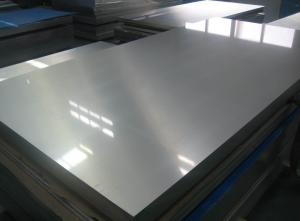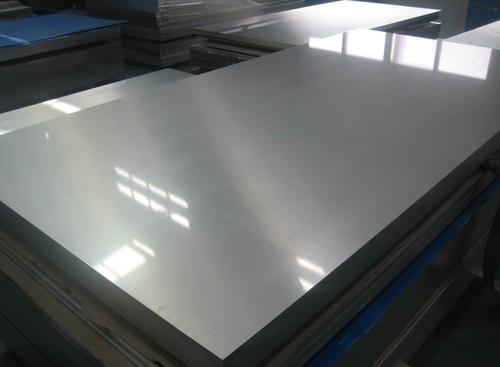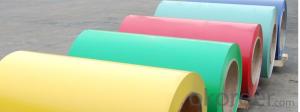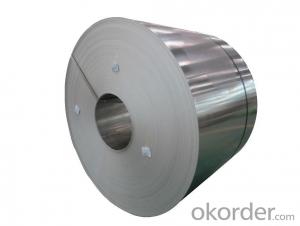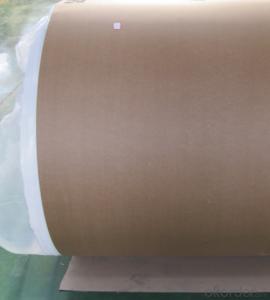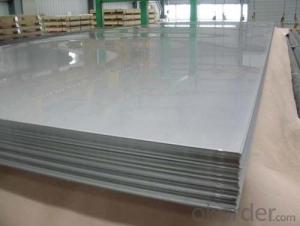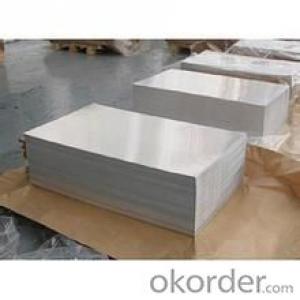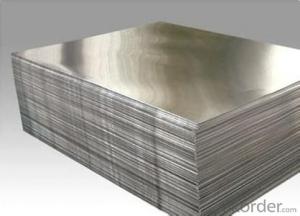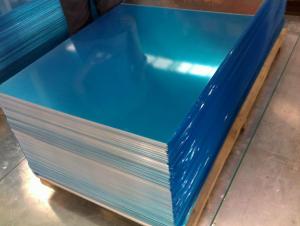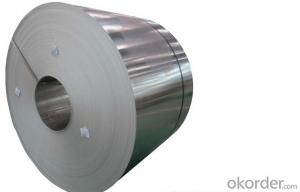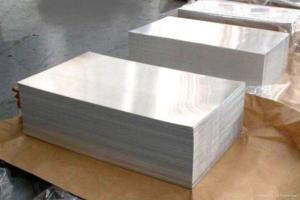3/8 Insulated Aluminum Sheets - Various Kinds of Mill Finished Aluminum Sheet for Different Applications
- Loading Port:
- China main port
- Payment Terms:
- TT or LC
- Min Order Qty:
- 5 kg
- Supply Capability:
- 10000 kg/month
OKorder Service Pledge
OKorder Financial Service
You Might Also Like
1. Description of Various Kinds of Mill Finished Aluminium Sheet for Different Applications
Alloy: 1xxx, 3xxx, 5xxx, 8xxx
Temper: H12, H14, H16, H18, H24, O, H32
Thickness: 0.2-4.0mm
Width: 200-1600mm
2. Application of Various Kinds of Mill Finished Aluminium Sheet for Different Applications
Used in construction and decoration,hardware and electric appliances manufacture,automobile manufacture and other industrial and civil purposes,such as electronic capacitor,composite cooker,rice cooker,refrigerator,computer casting,telecommunication equipment,lamp shade,air-conditioner,cosmetics cover and box,air-conditioner radiator,inner container of disinfecting cabinet,ceiling board,automobile motherboard,cover board and top board,etc.
3. Feature of Various Kinds of Mill Finished Aluminium Sheet for Different Applications
Surface Quality:be free from Oil Stain, Dent, Inclusion, Scratches, Stain, Oxide , Breaks, Corrosion, Roll Marks, Dirt Streaks and other defect which will interfere with use.
Package:Standard Export wooden Case/Pallet
Remark: Specific requirement of alloy, temper or specification can be discussed at your request.
4. Certificate:
SGS and ROHS(if client request, paid by client), MTC(plant provided), Certificate of Origin(FORM A, FORM E, CO), Bureau Veritas and SGS (if client request, paid by client), CIQS certificate
5. Image of Various Kinds of Mill Finished Aluminium Sheet for Different Applications
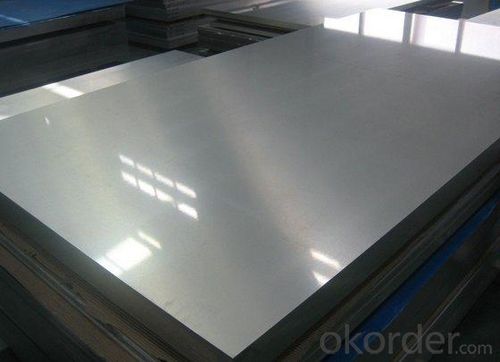
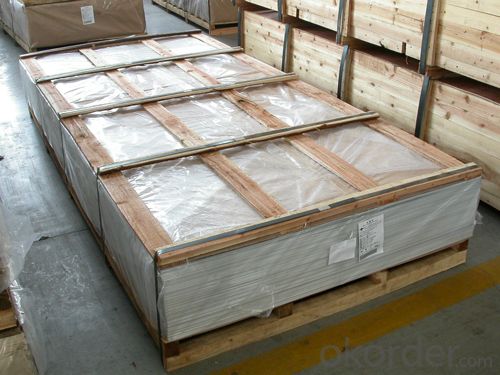
6. FAQ
1) What is the delivery time?
Dpends on actual order, around 20 days
2) What is the QC system:
We have QC staff of 20 persons and advanced equipment, each production is with MTC traced from Aluminum ingot lot.
3) What market do you mainly sell to?
Australia, America, Asia, Middle East, Western Europe, Africa etc
- Q: I recently had a new bridge plate and knobs made from aluminum for my guitar. They are bare uncoated aluminum. How would I go about protecting the parts from oxidation and corrosion? I just worry about the bridge plate because of sweat from playing my guitar near the bridge. There are no local places to get the parts chromed or anodized unfortunately.
- Aluminum rusts just like Iron, but Aluminum Oxide (unlike Iron Oxide) is tough and forms a layer a molecule or (a few) two thick and does NOT flake off easily. A related form you'd be familiar with is Corundum (2 Aluminum molecules and 3 Oxygen molecules + some trace elements), aka sapphire or ruby depending on being blue or red respectively. This is the same material that Rolex uses to make its watch faces; the famous sapphire surface that is highly resistant to scratching. In short, you have nothing to worry about, especially as aluminum used for commercial purposes is often alloyed with Chromium to increase durability.
- Q: 5083 what is the density of the aluminum plate?
- 5083 aluminum alloy is Al-Mg-Si, use a wide range, especially in the construction industry cannot do without this alloy, alloy is the most promising. The main alloying elements as magnesium, has good forming performance, corrosion resistance, weldability, moderate intensity, is a kind of pure aluminum alloy aluminum density: 2.71 tons. / m3 (g / cm3) alloy aluminum density: 2.8 tons / m3 (g / cm3) antirust aluminum density: 2.73 tons / m3 (g / cm3)
- Q: Can aluminum sheets be used for HVAC ductwork?
- Indeed, HVAC ductwork can utilize aluminum sheets. Owing to its lightweight and corrosion-resistant characteristics, aluminum stands as a favored option for ductwork. Moreover, it proves simple to manipulate and can be molded into diverse configurations and dimensions. Furthermore, aluminum ductwork is renowned for its robustness and extended lifespan. It frequently finds application in both commercial and residential HVAC systems, effectively circulating air within a structure.
- Q: What are the different methods of surface finishing for aluminum sheets?
- There are several methods of surface finishing for aluminum sheets, each with its own advantages and applications. Some of the common methods include: 1. Anodizing: This process involves immersing the aluminum sheet in an electrolytic solution and applying an electric current to create a protective oxide layer on the surface. Anodizing provides excellent corrosion resistance, durability, and can be colored or dyed for aesthetic purposes. 2. Polishing: Polishing is a mechanical process that involves buffing the aluminum sheet to create a smooth and reflective surface. It is commonly used for decorative applications and to enhance the appearance of the metal. 3. Brushing: Brushing involves using abrasive materials or brushes to create a directional grain pattern on the aluminum sheet's surface. This method is often used for architectural applications or to achieve a distinctive textured finish. 4. Powder coating: Powder coating involves applying a dry powder paint to the aluminum sheet's surface and then curing it under heat. This process provides a durable and vibrant finish, offering excellent resistance to weathering, chemicals, and UV rays. 5. Chemical etching: Chemical etching involves using acidic or alkaline solutions to selectively remove the aluminum from the sheet's surface, creating a textured or patterned design. This method is commonly used for decorative purposes or to enhance adhesion for subsequent coatings. 6. Laminating: Laminating involves bonding a protective film or layer onto the aluminum sheet's surface. This method provides added protection against scratches, stains, and other physical damage while also allowing for customization through different film finishes. 7. Sandblasting: Sandblasting uses high-pressure air or water to propel abrasive particles onto the aluminum sheet's surface, creating a textured or matte finish. It is often used to remove impurities, improve paint adhesion, or create a distinctive appearance. These are just a few of the many methods available for surface finishing aluminum sheets. The choice of method depends on the desired appearance, functionality, and specific requirements of the application.
- Q: How could two pieces of aluminium flakes be welded together?
- You can use argon arc welding, connect the positive pole with alternating current,aluminum wire as the welding wire.
- Q: Are 101 aluminum sheets suitable for outdoor signage?
- Yes, 101 aluminum sheets are suitable for outdoor signage. They are corrosion-resistant, durable, and can withstand various weather conditions, making them a suitable choice for outdoor applications.
- Q: How do you prevent fingerprints on aluminum sheets?
- There are several strategies you can use to prevent fingerprints on aluminum sheets: 1. Opt for gloves: To avoid leaving fingerprints on aluminum sheets, a simple solution is to wear gloves while handling them. This creates a barrier between your hands and the surface, preventing any marks or smudges. 2. Thoroughly clean the surface: Before touching aluminum sheets, ensure that the surface is clean. Use a suitable cleaning agent or mild detergent to remove any dirt or oils. Dry the sheets completely with a lint-free cloth to minimize the chances of fingerprints sticking to the surface. 3. Apply a protective coating: Prevent fingerprints by applying a protective coating on the aluminum sheets. Clear lacquer or a clear protective film designed for this purpose are viable options. These coatings create a barrier that reduces the visibility of fingerprints and makes them easier to clean off. 4. Handle with care: Minimize direct contact with aluminum sheets to reduce the likelihood of fingerprints. Fingerprints are more likely to occur when pressure is applied or when the surface is repeatedly touched. Whenever possible, use tools or gloves to manipulate the sheets instead. 5. Proper storage: Ensure that aluminum sheets are stored in a clean and dust-free environment, away from potential contaminants. Consider using protective sleeves or covers to shield the sheets from fingerprints and other marks. By implementing these preventive measures, you can significantly decrease the occurrence of fingerprints on aluminum sheets, maintaining their cleanliness and visual appeal.
- Q: Can aluminum sheets be used for water tanks?
- Yes, aluminum sheets can be used for water tanks. Aluminum is a lightweight and corrosion-resistant material, making it suitable for storing water. It is commonly used in industries such as aerospace and marine due to its durability and ability to resist rust and corrosion. Aluminum tanks are also easier to transport and install compared to other materials, and they can withstand high pressure and extreme temperatures. However, it is important to ensure that the aluminum sheets used for water tanks are of high quality and meet the necessary standards to ensure the safety and longevity of the tank.
- Q: What specific conditions are necessary for the storage and transportation of aluminum sheets to ensure their quality and safety?
- <p>Yes, there are special requirements for storing and transporting aluminum sheets. Aluminum sheets should be stored in a dry, cool place to prevent moisture and temperature extremes which can cause warping or corrosion. They should be stacked flat and evenly to avoid bending or denting. When transporting, aluminum sheets should be secured to prevent shifting during transit, which can lead to damage. Protective coverings may be used to shield the sheets from dirt, scratches, or other potential hazards. It's also crucial to handle the sheets carefully to avoid bending or denting, which can occur if they are not properly supported during transport.</p>
- Q: Is aluminum sheet recyclable?
- Yes, aluminum sheet is highly recyclable. Aluminum is one of the most sustainable and environmentally friendly materials, as it can be recycled indefinitely without losing its quality. The recycling process of aluminum sheet involves melting it down to its liquid form, which requires significantly less energy compared to the production of primary aluminum from raw materials. Recycling aluminum sheet not only conserves natural resources but also reduces greenhouse gas emissions and saves energy. It is estimated that recycling one ton of aluminum sheet saves about nine tons of CO2 emissions. Therefore, aluminum sheet recycling is not only economically viable but also an essential practice for maintaining a sustainable and eco-friendly environment.
Send your message to us
3/8 Insulated Aluminum Sheets - Various Kinds of Mill Finished Aluminum Sheet for Different Applications
- Loading Port:
- China main port
- Payment Terms:
- TT or LC
- Min Order Qty:
- 5 kg
- Supply Capability:
- 10000 kg/month
OKorder Service Pledge
OKorder Financial Service
Similar products
Hot products
Hot Searches
Related keywords
